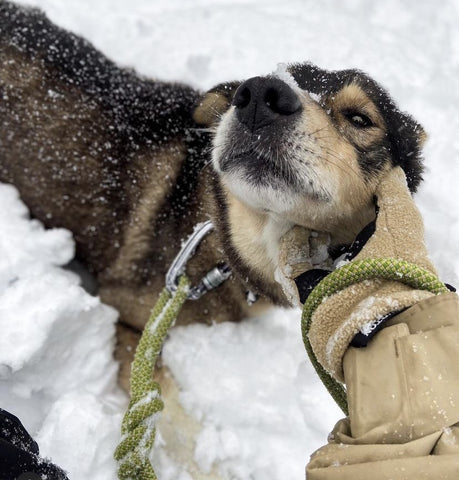Identification
Navigation
Visibility
Paw care
Insulation
Hydration
Nutrition
Sanitation
First-aid kit
Travel pad, sleeping bag or blanket
While it might be easier for you to find a dry spot to take a break, your dog will most likely have to find a seat on a cold, wet surface. Carrying a packable travel pad, sleeping bag or blanket can be an essential part of your backcountry pack to keep your pawl warm and dry.
Dog backpack
For carrying loads, 6 legs are better than 2. If you’re planning a longer stroll, your dog can help by carrying some of their stuff. Backpack for dogs come in different sizes to adjust to your pup's size and have enough pockets to ensure that you will have all the supplies they need to make hiking, camping, and other activities enjoyable.
Be safe and have fun!
Watch out for signs of cold and exhaustion and don't hesitate to either turn over to Plan B or return home if necessary. The importance is that everyone is comfortable, safe, and are having fun!
Related posts:
- Essentials for Hiking with Dogs in the Winter
- Best Tips for Winter Hiking with Dogs
- The Best Free Dog-Friendly Snowshoeing Trails to Do in the Sea-to-Sky Corridor This Winter
- Essential Tips to Keep Pets Safe in the Snow
- Keep the Trails Pet Friendly By Following Dog Hiking Etiquette









Leave a comment